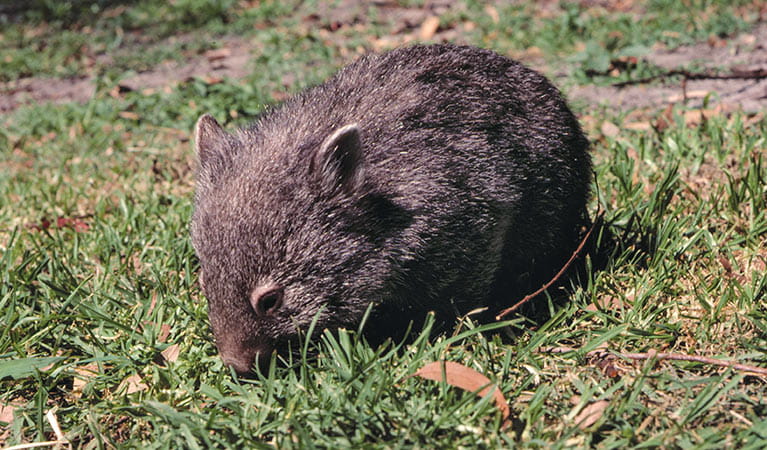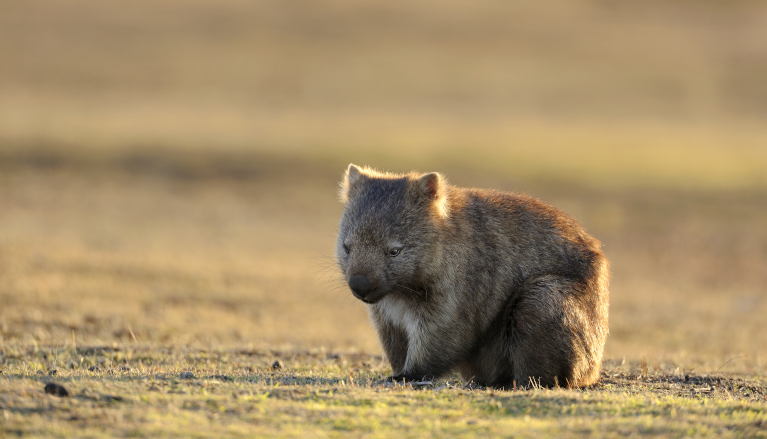Bare-nosed wombat
A large, squat marsupial, the Australian bare-nosed wombat is a burrowing mammal found in coastal forests and mountain ranges across NSW and Victoria. The only other remaining species of wombat in NSW, the endangered southern hairy-nosed wombat, was considered extinct until relatively recently.
Read more about Bare-nosed wombat
The bare-nosed wombat is a stocky Australian marsupial found in coastal forests, as well as the mountain ranges and western slopes of NSW and Victoria. The rarer southern hairy-nosed wombat, once thought extinct, is now considered endangered. With a blunt head, flat nose and powerful legs, wombats are expert burrowers, able to tunnel major warrens up to 30m in length.
With sharp front teeth that grow continuously, the bare-nosed wombat is well-equipped to eat a range of native tussocks such as snow grass, wallaby and kangaroo grass, and tree roots. Although quite slow and ungainly, a wombat can reach speeds of up to 40km per hour for short bursts.
Animal facts
- Common name
- Wombat
- Scientific name
- Vombatus ursinus
- Conservation status in NSW
- Protected
Parks in which this animal is found
- Abercrombie River National Park
- Barrington Tops National Park
- Capertee National Park
- Dharug National Park
- Gardens of Stone State Conservation Area
- Guula Ngurra National Park
- High Plains area in Kosciuszko National Park
- Jenolan Karst Conservation Reserve
- Khancoban area in Kosciuszko National Park
- Lower Snowy River area in Kosciuszko National Park
- Mount Wilson area in Blue Mountains National Park
- Murray Valley Regional Park
- Selwyn area in Kosciuszko National Park
- Southern Blue Mountains area in Blue Mountains National Park
- Thredbo-Perisher area in Kosciuszko National Park
- Tumut area in Kosciuszko National Park
- Wollemi National Park
- Wombeyan Karst Conservation Reserve
- Yarrangobilly area in Kosciuszko National Park




